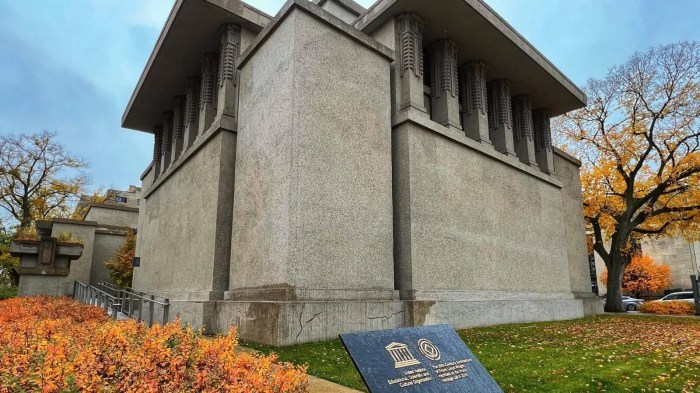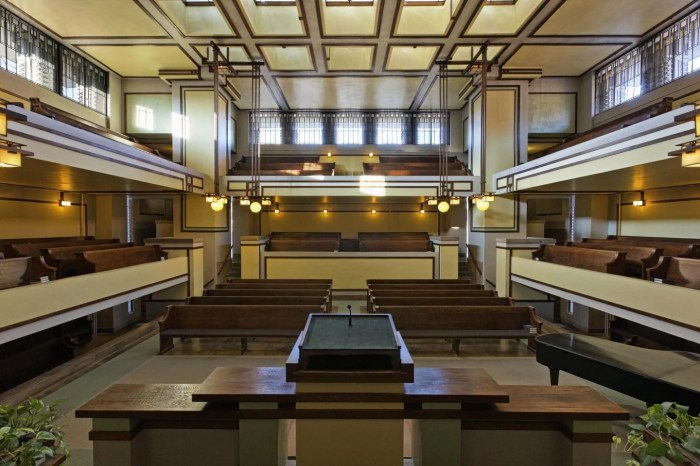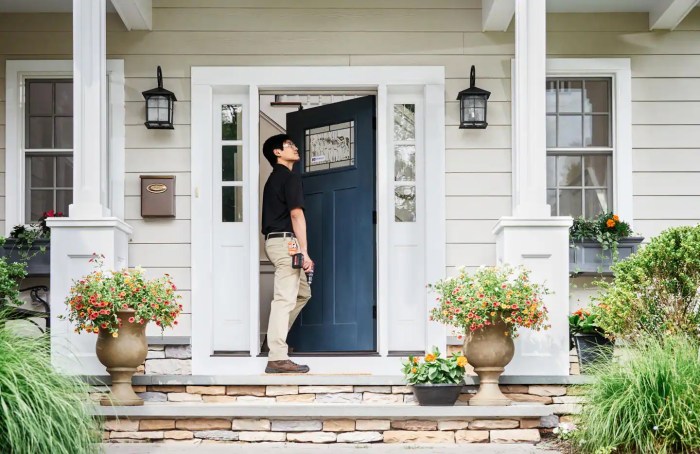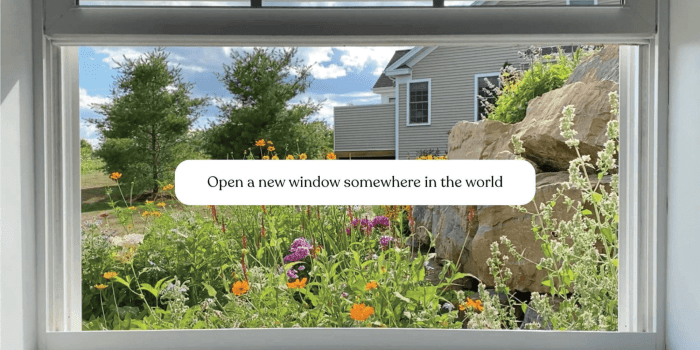Unity Temples Envelope Maintenance Over the Years: Preserving History
Exploring the meticulous care taken in maintaining Unity Temple's envelope over time, this introduction sets the stage for a fascinating journey through architectural preservation.
From the challenges faced to the evolution of maintenance practices, this topic sheds light on the importance of safeguarding historical landmarks.
Overview of Unity Temple’s Envelope Maintenance
Maintaining the envelope of historical buildings like Unity Temple is crucial for preserving their architectural significance and historical value. The envelope, which includes the exterior walls, roof, windows, and doors, serves as a protective barrier against the elements and plays a vital role in maintaining the structural integrity of the building.
Challenges Faced in Maintaining the Envelope of Unity Temple
Over the years, Unity Temple has faced numerous challenges in maintaining its envelope due to its age and architectural complexity. The unique design of the building, featuring flat roofs and intricate concrete details, requires specialized care and attention to ensure its preservation.
Importance of Regular Upkeep to Preserve Architectural Integrity
Regular upkeep of Unity Temple's envelope is essential to prevent deterioration and structural damage. By addressing issues such as water infiltration, moisture retention, and wear and tear in a timely manner, the architectural integrity of Unity Temple can be preserved for future generations to appreciate and enjoy.
Historical Evolution of Envelope Maintenance
Since the construction of Unity Temple, maintenance practices for its envelope have evolved to ensure the preservation of this architectural gem.
Timeline of Maintenance Practices
- 1906-1920s: Original construction materials like concrete and stained glass were primarily maintained through routine inspections and minor repairs.
- 1950s-1970s: With aging of the structure, extensive repairs were carried out, including patching of concrete and replacement of some stained glass panels.
- 1990s-present: Various restoration projects were undertaken to address water infiltration issues and restore the original beauty of the envelope.
Changes in Materials and Techniques
Over the years, there have been significant advancements in materials and techniques used for envelope maintenance at Unity Temple.
- Early maintenance relied on traditional methods like patching and sealing with basic materials.
- Modern approaches involve the use of specialized sealants, protective coatings, and advanced repair technologies to ensure long-term durability.
Significant Restoration Projects
Several restoration projects have been pivotal in maintaining the envelope of Unity Temple and preserving its architectural integrity.
- 1989 Restoration: Extensive repairs were carried out to address structural issues and restore the exterior facade to its original grandeur.
- 2015 Preservation Project: A comprehensive restoration initiative focused on the envelope, including repairs to the concrete structure and stained glass windows.
Preservation Strategies and Techniques
Preserving the envelope of Unity Temple from environmental factors is crucial to maintaining the historical integrity of the building. Various strategies and techniques have been employed to ensure the longevity of this architectural gem.
Role of Preventative Maintenance
Preventative maintenance plays a key role in extending the lifespan of Unity Temple's envelope. By addressing minor issues before they escalate, such as repairing small leaks or cracks promptly, the overall condition of the envelope can be preserved for years to come.
Innovative Techniques and Technologies
- Utilization of advanced sealants and coatings: Innovative sealants and coatings have been used to protect the envelope of Unity Temple from moisture infiltration and UV damage. These modern materials provide enhanced durability and longevity compared to traditional methods.
- Thermal imaging for insulation assessment: Thermal imaging technology has been employed to assess the insulation performance of the building envelope. By identifying areas of heat loss or air leakage, targeted improvements can be made to enhance energy efficiency and preserve the structure.
- Non-destructive testing methods: Non-destructive testing techniques, such as infrared thermography and ultrasound scanning, have been utilized to evaluate the condition of the envelope without causing damage. This allows for early detection of potential issues and informed decision-making regarding maintenance and repairs.
Impact of Weather and Climate on Envelope Maintenance

Weather patterns and climate changes play a significant role in influencing the maintenance needs of Unity Temple's envelope. The exposure to varying weather conditions over the years has presented unique challenges in preserving the historical integrity of the building.
Weather-Related Challenges
- Moisture Infiltration: The fluctuating levels of humidity and precipitation have caused moisture infiltration, leading to deterioration of the envelope materials.
- Temperature Extremes: The exposure to extreme temperatures, from hot summers to cold winters, has put stress on the envelope components, causing expansion and contraction.
- Wind Damage: Strong winds have taken a toll on the exterior surfaces, accelerating wear and tear on the envelope and compromising its structural integrity.
Adaptive Maintenance Strategies
- Sealing and Waterproofing: Implementing effective sealing and waterproofing techniques to protect the envelope from moisture infiltration and water damage.
- Insulation Upgrades: Upgrading insulation to regulate indoor temperatures and minimize the impact of temperature extremes on the envelope materials.
- Regular Inspections: Conducting regular inspections to identify weather-related wear and tear early on, allowing for prompt repairs and maintenance.
End of Discussion

In conclusion, Unity Temple’s envelope maintenance stands as a testament to the dedication towards upholding architectural heritage for future generations to cherish and admire.
Questions and Answers
How often is Unity Temple's envelope maintained?
Maintenance is conducted regularly to ensure the structural integrity and historical significance are preserved.
What are some challenges faced in maintaining Unity Temple's envelope?
Challenges include balancing preservation needs with modern restoration techniques while adhering to historical accuracy.
Are there any innovative technologies used in envelope maintenance?
Yes, technologies like laser scanning and 3D modeling are utilized to enhance preservation efforts.




